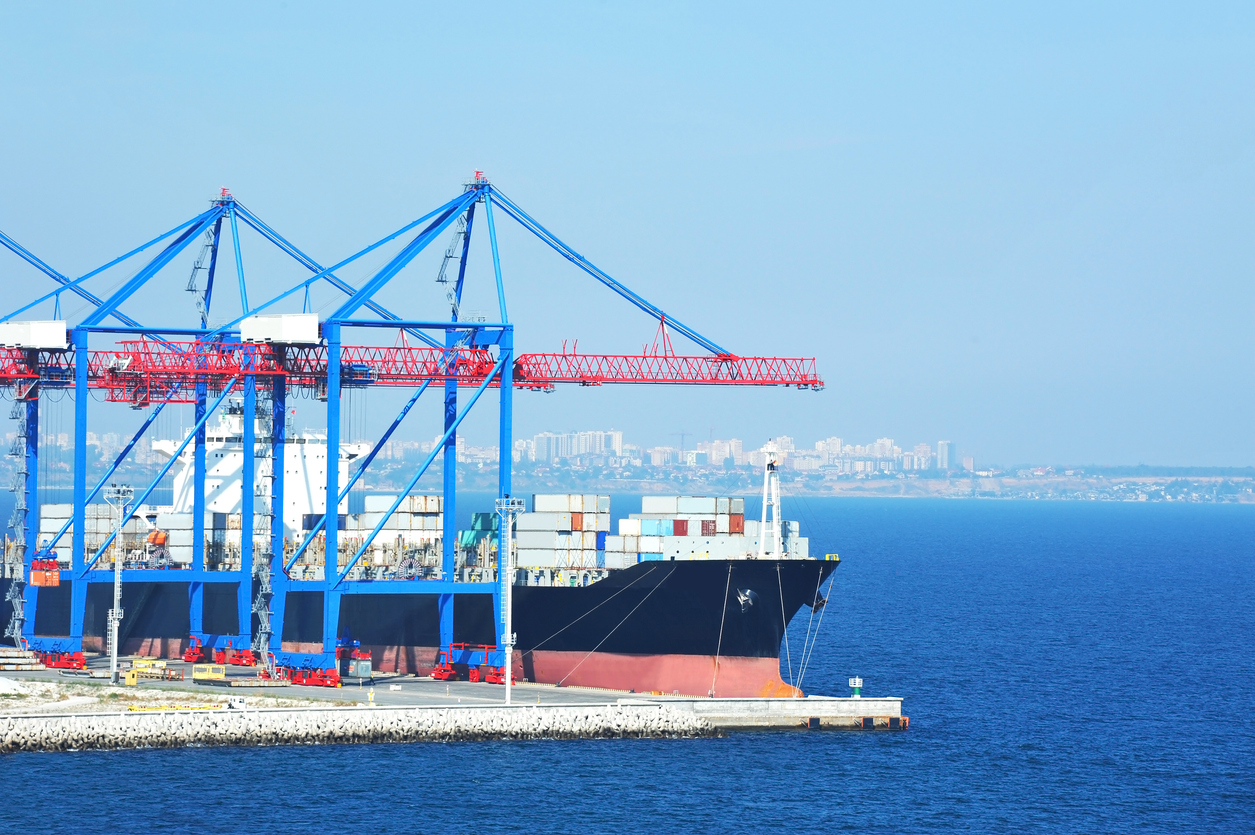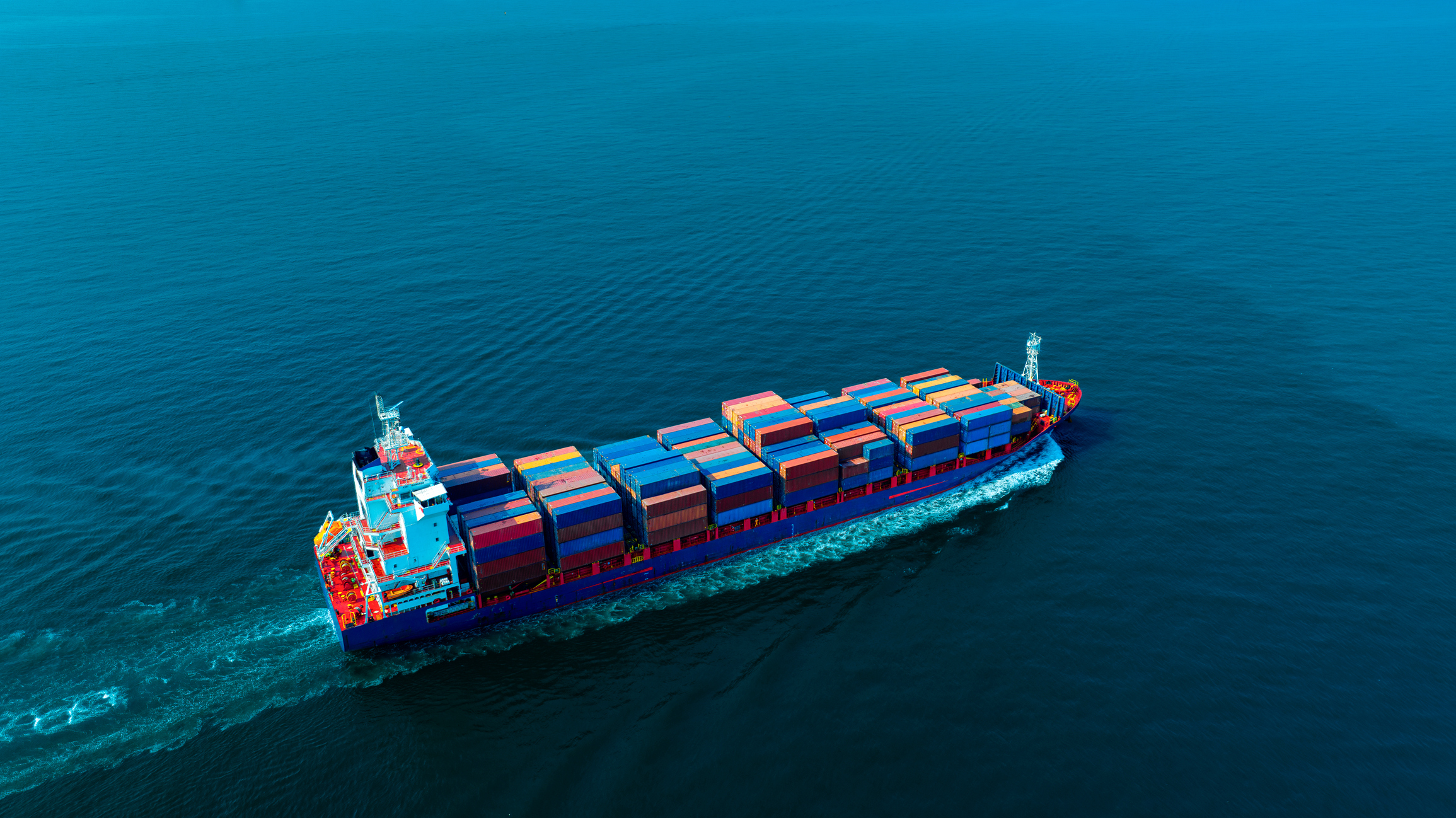

News
Please Choose
-

09.10.2024
#News
EVFTA and opportunities for Vietnam's shipping industryThanks to the commitments in the Vietnam – EU Free Trade Agreement (EVFTA), Vietnamese maritime transport service providers are having many great opportunities in terms of both supply and demand as well as conditions to effectively implement this service. Vietnam’s commitments on maritime transport services in EVFTA In EVFTA, Vietnam’s commitments related to maritime transport services include: For international maritime transport, Vietnam’s EVFTA commitments fully open the door to cross-border supply and overseas consumption for both passenger transport services and freight transport services, except for domestic maritime transport. Particularly for the commercial presence method, Vietnam allows EU investors to establish a company operating a fleet flying the Vietnamese flag in the form of a joint venture with the condition that foreign capital does not exceed 70%; foreign crew members do not exceed 1/3 of the ship’s crew and the captain or first mate is a Vietnamese citizen. When wanting to establish a 100% foreign-owned enterprise, it is only allowed to provide 07 groups of services including: Sales and marketing of maritime transport services; Representing shippers; Providing information; Preparing documents related to transport documents; Providing maritime transport services including domestic transport services by ships flying the Vietnamese flag if it is an integrated transport service; Organizing ships to enter ports or receive goods on behalf of the company; Negotiating and signing contracts for road, rail and inland waterway transport related to goods transported by the company. Ship maintenance and repair services are fully open to cross-border supply methods and overseas consumption methods; for commercial presence, Vietnam only allows the establishment of joint ventures with foreign capital accounting for up to 70%. For maritime transport support services, Vietnam has not committed to cross-border supply methods but is fully open to overseas consumption methods for both container handling services and customs clearance services; at the same time, it only allows the establishment of foreign-owned joint ventures with up to 50% foreign capital for container handling services and does not limit the foreign capital ratio for customs clearance services. Regarding maritime agency services, Vietnam commits to fully open the market for two modes of cross-border supply and overseas consumption; but only allows the establishment of foreign-owned joint ventures with up to 49% foreign capital. In particular, container warehousing services have the strongest commitment level when allowing full opening of all three modes of cross-border supply, overseas consumption and commercial presence in Vietnam for EU enterprises. For inland waterway transport services, in the EVFTA, Vietnam still excludes inland waterway transport from the scope of maritime transport service commitments, thereby maintaining the domestic maritime transport market for Vietnamese shipping lines and transport enterprises. However, Vietnam has a commitment to allow EU international maritime transport service providers to: (1) Redistribute empty containers (on condition that such containers are not transported for a fee as cargo and will be used to handle the cargo of that shipping line) between Quy Nhon port and Cai Mep – Thi Vai port. After 5 years, the port limit will be removed, but with the condition that the cargo consolidation vessels (mother ships) must call at Vietnamese seaports and provide cargo consolidation services by ship between Quy Nhon port and Cai Mep – Thi Vai port. Opportunities and challenges for Vietnam’s maritime transport services Thanks to the commitments in EVFTA, Vietnamese maritime transport service providers are facing many great opportunities in terms of both supply and demand as well as conditions for effective implementation of this service. Opportunity to increase the size of the maritime transport service market: The EU is currently one of Vietnam’s leading trading partners with two-way turnover in 2019 reaching 56.45 billion USD; of which the import and export turnover of goods by sea reached 30.31 billion USD, accounting for 53.69%. At the same time, according to forecasts, EVFTA is expected to help Vietnam’s export turnover to the EU increase by about 42.7% and Vietnam’s import turnover from the EU increase by about 33.06% in 2025; the corresponding figures in 2030 are 44.37% and 36.7%. As import and export activities between the two sides grow, the logistics service market will expand, especially maritime transport services. Opportunity to increase the efficiency of maritime transport services from administrative procedure reform of the Government: In order to implement institutional commitments and non-tariff barriers as required by EVFTA, the Vietnamese government will have to reform administrative procedures such as customs procedures, specialized inspection procedures, etc. Thanks to that, many logistics activities can be significantly improved, including transportation and freight support services, including maritime transport. Opportunity to reduce investment costs in maritime transport infrastructure: The EU has always been a source of high-quality supplies for means of transport, machinery, equipment, and technology serving logistics activities. Therefore, Vietnam’s commitments to eliminate tariffs on means of transport and equipment imported from the EU are opportunities for maritime transport enterprises to save costs on investment in infrastructure providing logistics services and improve technological capacity. Opportunity to attract investment from the EU in the maritime transport sector: The wider opening of the maritime transport service market within the framework of EVFTA will encourage EU logistics companies to invest in the Vietnamese market. When forming joint ventures with EU partners, Vietnamese maritime transport service providers will take advantage of the experience, management skills, capital, and existing networks of their partners. This is a great opportunity for Vietnamese maritime transport enterprises to develop in the future. From another perspective, EVFTA also poses significant challenges for Vietnamese shipping enterprises. Because the EU has many countries that are very strong in logistics with large, modern fleets, accounting for a significant market share in the world shipping market. The strong opening commitments in EVFTA will make competition between EU enterprises and Vietnamese shipping enterprises increasingly fierce. Although the EU also opens the logistics services market, including shipping services for Vietnamese enterprises. However, in reality, the ability to access the EU market of Vietnamese shipping enterprises is not high. Therefore, Vietnamese logistics enterprises need to have a plan to overcome current limitations, thereby improving their competitiveness, especially understanding the EVFTA’s commitments to open logistics services to identify new risks in competition with competitors from the EU. Dr. Tran Thi Thu Huong – Bui Duc Trung According to Vietnam Logistics Review Magazine -

09.10.2024
#News
Welcoming the largest cargo ship ever to Vietnam portThe CSCL Star, a container ship with a capacity of nearly 160,000 tons, recently docked at CMIT International Port, part of the Cai Mep International Port complex in Ba Ria-Vung Tau province. This marks the arrival of the largest container vessel to ever call at a Vietnamese port. CSCL Star docks at CMIT Port, Ba Ria – Vung Tau. On the morning of October 29th, CMIT Port held a ceremony to welcome the CSCL Star, owned by China Shipping. This vessel, with a capacity exceeding 14,000 TEUs, is among the largest container ships in the world and is operated by the Ocean Three alliance (comprising CMA-CGM, CSCL, and UASC) on the Asia-Europe service route. This is the first time a Vietnamese port has received a vessel of this size, marking a significant milestone for the country’s port operations. It solidifies the position of Cai Mep – Thi Vai as the third port in Southeast Asia (after Singapore and Malaysia) capable of accommodating such massive ships. Vietnamese exports can now be loaded directly onto the mother vessel at CMIT for transport to Europe, eliminating the need for transshipment at other regional ports like Hong Kong, Singapore, and Malaysia. This reduces costs, increases competitiveness for Vietnamese exports, and allows goods to reach the market faster. uring this port call, the CSCL Star will receive 130 containers transferred from Thailand via CMIT for direct delivery to Europe without passing through any other intermediary ports. Speaking at the ceremony, Mr. Nguyen Van Cong, Deputy Minister of Transport, stated that CMIT’s reception of this large vessel opens up development opportunities for Vietnam’s maritime sector, especially in the areas of shipping and port operations. Mr. Cong also noted that in the first nine months of 2015, cargo traffic through Vietnamese seaports reached 343 million tons, an 11% increase compared to the previous year. At Cai Mep port, there were 936 vessel calls, including 283 vessels with a tonnage exceeding 80,000 tons. Source: tienphong.vn -

09.10.2024
#News
Seaport enterprises 'turn on' proposal to reduce 30% of container loading and unloading price of Maritime AdministrationSeveral Vietnamese port associations and companies, including the Vietnam Seaports Association (VPA), the Vietnam Ship Agents and Brokers Association (VISABA), and port operators such as Dinh Vu Investment and Development JSC, Cai Mep Port LLC, and Saigon Port JSC, have collectively submitted appeals to the Ministry of Transport (MOT) to reject the Vietnam Maritime Administration’s (VMA) proposal to reduce container handling fees by 30%. Container handling fees already at “rock bottom” Mr. Nhu Dinh Thien, General Secretary of VISABA, stated that “container handling fees in Vietnam, especially for our import and export goods, are currently 2-3 times lower than in other countries in the region. Therefore, reducing container handling fees by 30% will create significant difficulties for port businesses”. Echoing this sentiment, a representative of the VPA said, “Currently, Circular 54/2018/TT-BGTVT issued by the MOT regulates the floor price for container handling services at an excessively low level, with costs only about half the average of other countries in the region. (The average price for domestic transport is only 1/3 of the aforementioned foreign price), this is depleting the development potential of seaport enterprises”. In an interview with VietnamFinance, Mr. Trieu The Thuan, Deputy General Director of Dinh Vu Investment and Development JSC, said, “In Hai Phong (Region I), the floor price for container handling services is currently the lowest in the country. For example, the floor price for foreign containers is 33 USD/20′ container (only 80% compared to Region III). Meanwhile, the floor price for domestic containers is 260,000 VND/20′ container (only 33% of the floor price for foreign containers). Thus, a 30% reduction will greatly affect port revenue”. According to Mr. Nguyen Quoc Hung, Deputy General Director of Saigon Port JSC, “the current floor price for domestic containers in Ho Chi Minh City is very low (260,000 VND/20′ container), only 27% of the floor price for foreign containers in the same region, which is 41 USD/20′ container. Therefore, any further reduction will only benefit foreign shipping lines”. Foreign shipowners benefit The VPA stated, “Currently, if ports reduce prices, shipowners will directly benefit. Specifically, shipowners are currently collecting from import-export cargo owners through THC (Terminal Handling Charge). Shipowners are currently collecting over 90 USD/20′ container from cargo owners while only paying 52 USD/20′ container to the port at Cai Mep. In the Hai Phong area, shipowners only pay 20 USD/20′ container. Thus, the discrepancy is up to 40 USD/20′ container, with over 10 million TEUs of containers passing through seaports each year.” “This shows a ‘discrepancy’ of hundreds of millions of USD per year, which foreign shipping lines have successfully maintained for many years through the mechanism of managing seaport service prices in Vietnam. Therefore, a further 30% reduction in service prices will cause more unreasonable and severe damage to the port business sector,” a VPA representative analyzed. The VPA representative also said, “Another reality is that shipowners are currently also major shareholders investing in deep-water ports such as Lach Huyen and Cai Mep, with a throughput accounting for 70% of the country’s container cargo market share. These joint ventures and shareholders will have a competitive advantage and increase their market dominance in the long term if they can ‘force’ service prices as low as possible to weaken other competing ports that do not have the same capital resources as Vietnamese seaport enterprises and joint venture ports without capital from these shipping lines.” The VPA also warned, “Currently, Vietnam’s container shipping services are dominated by foreign shipping lines, which hold up to 95% of the market share. The pressure on prices and fees from foreign shipping lines is the trend of dominating the competitive seaport service market, which has been and is differentiating the strategic development of Vietnam’s marine economy under the current management mechanism. Therefore, we propose not to reduce the loading and unloading service price by 30%, and at the same time, to raise seaport service prices to the same level as other countries in the region”. Source: https://vietnamfinance.vn/ -

09.10.2024
#News
Turning Covid-19 Challenges into Opportunities for E-Commerce Fulfillment ServicesThe COVID-19 pandemic has disrupted supply chains on an unprecedented scale. But along with the difficulties, many people have gradually switched to e-commerce and embraced new opportunities. First is the opportunity to increase the reach of e-commerce, its importance, and change the habits of stakeholders, from cargo owners and freight forwarders to consumers. As consumers shift to online transactions, the success and survival of companies depend on their ability to reach customers online, while satisfying their needs, from increasing product choices, providing advice, and after-sales service, to delivering goods to consumers safely and quickly. In many cases, companies have to adopt an omni-channel model to suit different customer groups. For example, according to Digital Commerce 360 statistics, consumers on Amazon spent $11,000 per second on online shopping, and Best Buy’s online sales have increased by 155% since March 2020, illustrating the surge in online e-commerce activity during the Covid-19 pandemic. Recent surveys show that even after the pandemic has passed, the business environment and shopping habits will not completely return to the pre-pandemic era. An Accenture survey found that consumers will increase their online shopping from 32% to 37% after the pandemic. Many astute companies are realizing that e-commerce will remain a key sales channel for manufacturers and packaged goods retailers after the pandemic. Investing in factories or distribution networks to adapt to new trends will help shape future business operations. However, switching to beneficial omni-channel models will require more tools and platforms than just a website or some simple online marketing channels. Companies need to consider the quality and reliability of their entire supply chain and how to minimize the cost of fulfilling e-commerce orders, including logistics and transportation planning as well as multi-carrier parcel shipping strategies. To succeed, companies will need to develop assets and expertise in these areas or work with partners who can fill these gaps. For example, TAGG Logistics and their subsidiary Le Saint Logistics recently joined forces to close the loop on e-commerce fulfillmentt with a nationwide transportation hub and fulfillment center network. Retailers undergoing digital transformation have more new customers. During the pandemic, companies have proven more loyal to brands than retailers, creating great opportunities for retailers with inventory. According to Digital Commerce 360, 30% of consumers shop at different retailers when their preferred brands are not available or delivery will be delayed. Of those consumers who switched to online shopping during the COVID-19 pandemic, 45% said they plan to continue shopping with new vendors they found online. A Numerator survey shows that three e-commerce groups were very successful during the Covid-19 pandemic: Walmart with 49% new online shoppers and 40% continuing to buy, Target with 29% and 25% respectively; and CVS with 9% and 18%. The lesson about logistics for e-commerce during the pandemic becomes clear: timely delivery and always having a ready supply. TAGG Logistics provides customized omni-channel fulfillment services to support the consumer brand experience with resources and delivery expertise to ensure same-day fulfillment as well as next-day and two-day delivery to most locations in the US. The agility of the omni-channel environment is evident in the increasing trend of using “Click and collect” – buying online and picking up at their chosen location/store (BOPIS). Consumers are driving this trend and retailers are benefiting from it. Three-quarters of consumers recently surveyed by Numerator have placed home delivery orders and more than half have placed “Click and collect” orders. The largest providers of these channels are some of the biggest beneficiaries including Walmart, Target and CVS. Numerator says two-thirds of consumers say they will continue to choose “click and collect” post-Covid-19. Meeting the high and challenging demands of omni-channel consumers requires logistics companies to have a comprehensive solution with reliable facilities, infrastructure and information systems. Manufacturers score points as consumers care more about brands. The supply of goods in the e-commerce environment has become more diverse and dynamic. However, many products and brands have not yet been put on electronic shelves, so online consumers have to choose other brands. Digital Commerce 360 surveys show that 44% of shoppers in the US tried at least one new brand during the pandemic because their familiar products were not available or delivery would be delayed. Consumers who are aware of new brands have created opportunities for businesses to find new customers. Notably, customers are increasingly open to new experiences in the e-commerce environment and are looking for opportunities to buy directly from manufacturers. Digital Commerce 360 shows that 39% want to shop directly on the business’s own website instead of on general shopping websites. The delivery model to lockers is also increasing. This is an opportunity for consumers to receive goods delivered to their door while still ensuring safety protocols, limiting contact and being proactive in pick-up time. This is also an opportunity for brands to introduce their products. During the pandemic, Klaviyo found that twenty-three percent of consumers recently signed up for an online shopping service. How to impress consumers and make them come back after the first purchase? The answer is: not just the product, but their entire experience in that transaction. COVID-19 has forced companies with or without online sales plans to adjust to adapt to the new context. According to Numerator, households switched to online shopping for essentials or items that accounted for the main part of their spending during the pandemic and shopped online more often and the volume for each transaction increased compared to when they shopped at traditional retail stores. Most traditional consumer packaged goods (CPG) companies are not built to scale rapidly, a very costly and complex process if they want to achieve completion. Therefore, the risk is high for companies that choose to self-fulfill e-commerce. Companies need to find processes that ensure orders are fulfilled on time and accurately; A bad experience leads to bad reviews, not retaining customers and even damaging the brand they have worked so hard to build. Third-party logistics (3PL) providers have proven their ability to meet increased demand and help their customers scale. In addition to carrying out e-commerce activities for some of the most successful companies in the US, these companies are also successful in fast-selling segments, segments with high pressure on delivery time or requiring turnaround ability. fast rotation. Mitigate risk by diversifying your warehouse and distribution center network. Hormel is one of many businesses, manufacturing facilities, and fulfillment centers facing closures due to the COVID-19 outbreak. The negative impacts of the pandemic could force many businesses to shut down their distribution systems or at least damage their brands. Diversification is a necessary requirement to reduce risk in the order fulfillment process, the more fulfillment options, the less risk. As the nation transitions to a “new normal” of both fighting the epidemic and restoring economic and commercial activities, e-commerce and e-commerce logistics are expected to provide consistent solutions for consumers and businesses. Businesses need to create a consumer-oriented supply chain, prepared to respond to any fluctuations that the Covid-19 pandemic and the market create in a volatile and unpredictable context like today. VITIC compiled from https://www.iwla.com/converting-covid-19-challenges-into-e-commerce-order-fulfillment-opportunities/ Reference: Distinguishing between Omni Channel and Mutil channel What is Multi Channel? This is a model that has been developed for a relatively long time since technology began to develop. Accordingly, this model will use many channels to attract customers. Businesses apply 5 popular sales channels as follows: POS – traditional retail point; Social networks – To promote businesses and sell directly on Zalo, Facebook; Website – Professional brand introduction and direct sales channel; Mobile application (mobile app) – selling via smartphone platform; Affiliate – Selling through a network of collaborators or through another website. The highlight of this model is that each channel will have a separate sales and management system with its own warehouse, so the process is also different. Therefore, this model shows many drawbacks such as easy disorder in inventory management with too many separate management systems, inflexibility in inventory between channels (lack of goods channel, excess goods channel), etc. Therefore, this is a model that consumes a lot of resources, is difficult to manage, and is not effective in sales What is Omni Channel? This is a customer-centric model in reaching out through sales channels, maximizing sales from offline to online channels with just one system to manage. All sales channels will be synchronized with each other in terms of management information such as products, customers, inventory, promotions, order fulfillment. Thus, this synchronized management chain will bring a consistent experience to customers anytime, anywhere and help you manage your business more easily. The outstanding advantage of omni channel compared to multi channel is the unity in management, helping you to organize well, save resources and operate your business effectively. Managing multiple channels with the omni channel model provides you with a panoramic picture of inventory, shipping, cash flow, etc. so you can predict more accurately and easily make decisions for future plans. Besides, Omni channel is also easy for you to measure the operating efficiency of each store, compare stores with each other, and support each other in the online distribution chain to promote sales increase for businesses. Source: http://logistics.gov.vn/

